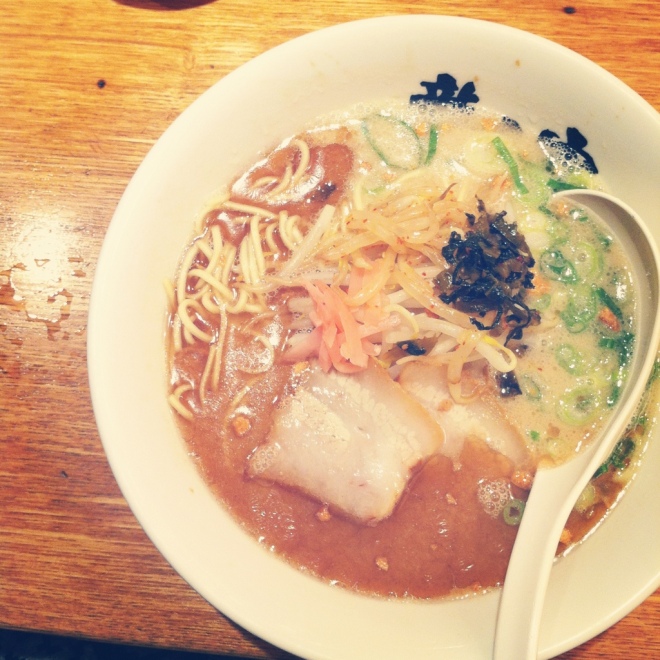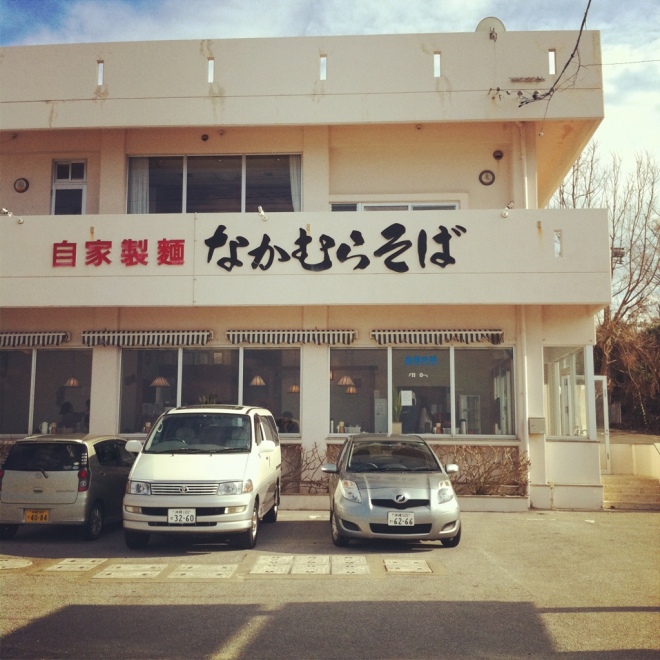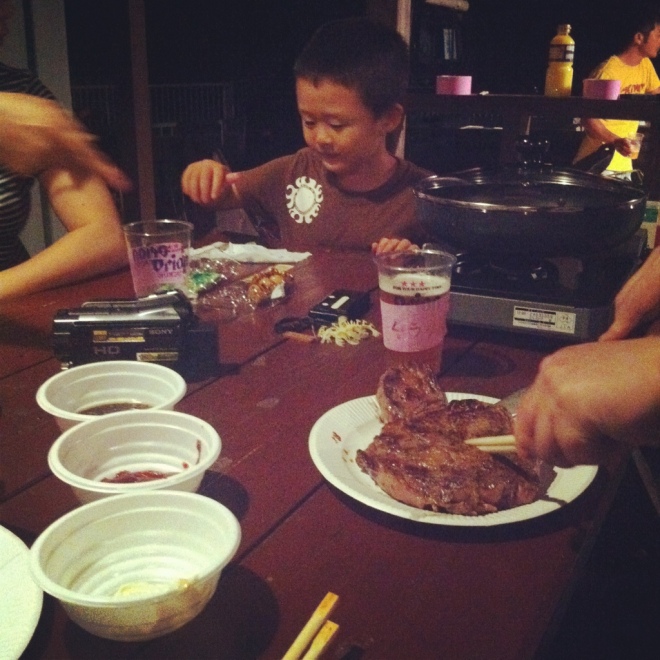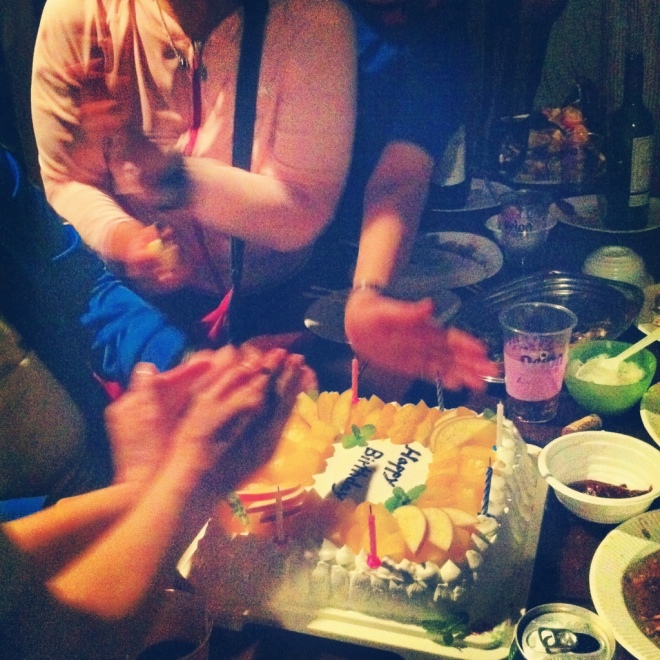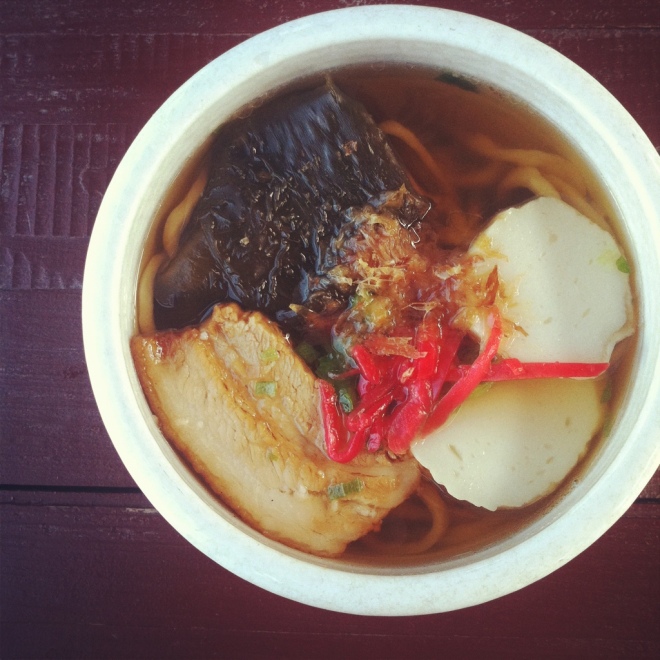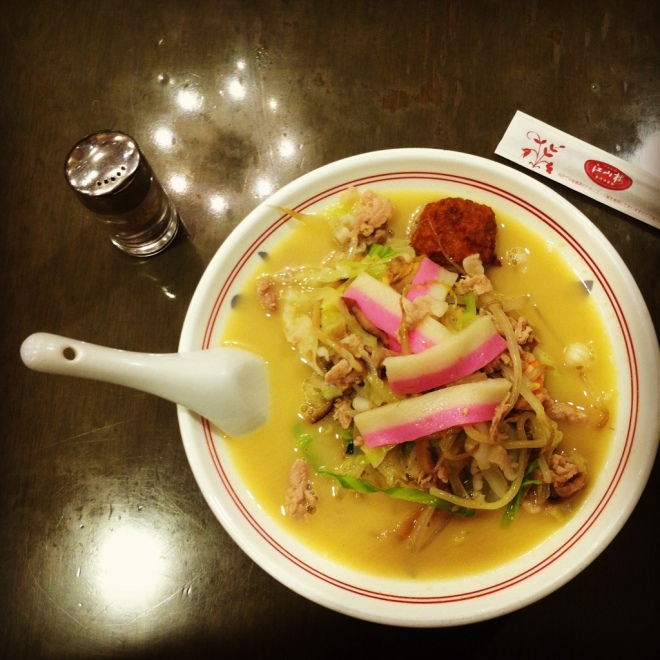
A weird thing happened to me when I got to Nagasaki.
It didn’t take long. I got off the train and something felt a bit funny, a bit familiar, like I’d been there before. (I hadn’t). I looked out the window of the place I was staying, out at some glimmering water and hills in the distance. Again, that funny feeling – what was it, comfort? deja vu? – and then it passed.
I went out for a walk along the waterfront, and remembered someone once told me Nagasaki’s a bit like Wellington. Yep, I could see it: the way the hills wrapped around the glittering harbour, the sun reflecting off the houses stacked up on the hills, a cool wind cutting through the afternoon sun (though it may have just been the weather on that particular day). I went up to the lookout atop Inasa-yama and I swear I could’ve been up Mt Vic: the shape of the harbour below, the houses creeping up the opposite hillside, even a mammoth building of some sort where Te Papa should’ve been, all very much Wellington and not-Wellington all at once. Yep, weird.

To a Wellingtonian, Nagasaki feels so eerily familiar that you’re second-guessing yourself every time you glance over your shoulder: am I really in a foreign place? If I just keep walking along the waterfront this way, won’t I be home? It’s unnerving, though not in an unpleasant way.
Maybe what happens is your subconscious recollection of shapes and colours of city and landscape triggers your muscle memory, puts your mind at ease and relaxes your body a bit, you’re okay, it tells you, you know where you’re going. Except you don’t know at all where you’re going, you’re in a totally new place, a place you’ve never been before. When you then squint your eyes a little bit and look at the details, you realise those houses on that hill aren’t at all the old villas on Mt Vic, that that ship in the harbour isn’t going to Picton, that waterfront cafe is selling takoyaki and soft-serve, not flat whites and gelato, you know it’s not quite right. Then your just-relaxed mind has to work twice as hard to remind yourself: you’re in a totally new place, keep your wits about you, you’re nowhere close to home. It’s confusing. It’s tiring.
And then it happens: a tightening of the heart, a lump in the throat, an overwhelmingly woeful sensation of solitariness. Homesickness. It hit me in Nagasaki, hard, and I haven’t really been able to shake it since then.
The good thing, though, about being homesick, tired and cold, is that it’s the perfect state to really enjoy a good bowl of noodles. They’re hot! Comforting! Delicious! All very good things for a weary traveller.
Nagasaki is famous for its champon noodles, a kind-of-Chinese noodle soup with seafood and stir-fried vegetables in an almost creamily opaque soup. The story of its origin goes something like this: sometime around the late 19th century, the owner of a Chinese restaurant in Nagasaki invented the noodle dish as a cheap, filling student dish for the influx of Chinese students in Nagasaki at the time. It grew in popularity and is now one of the foods that is synonymous with Nagasaki.
Because of the dish’s Chinese roots, a lot of the places serving champon in Nagasaki are Chinese restaurants, especially concentrated in Nagasaki’s little Chinatown district that spans a few blocks not far from the harbour.
It’s hard to differentiate between each restaurant – they’re lined up one after the other – but I picked this one called Kozanro, after reading about it on a few Japanese websites (also, many of the other places had already closed for the night).
I slipped in three or four minutes before last order was called. It was a Chinese restaurant in the old Japanese style of Chinese restaurant, like all the rest in the area: big garish gate over the entrance, formal, hotel lobby-like reception area, starkly lit dining room that smells of stale newspapers and soy sauce, baroque music piped in through the stereo. Almost everyone around was slurping bowls of noodles. Excellent.
My bowl arrived pretty quickly. As I jotted in my little notebook after tasting the soup: “first impressions: holy shit this is good.” The soup is opaque, milky, more substantial than a broth, it has an almost-silky texture. It’s rich and salty and packed with umami, I thought I detected hints of pork and maybe chicken. I’d never had anything quite like it before, but it somehow tasted familiar. Curious.
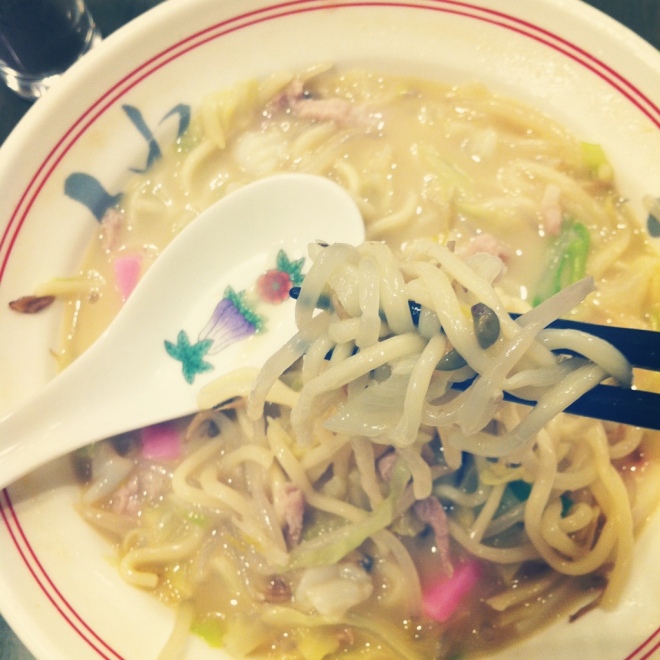
On top of the noodles were fish cakes, pork, prawns, littleneck clams, squid, a fried pork meatball, a mix of stir-fried vegetables like bean sprouts, cabbage, shiitake. The noodles themselves were chewy with a reasonably high moisture content, round and a bit thicker than spaghetti.
Unlike a lot of noodle places in Japan, here there were no condiments at the table except a lone shaker full of finely ground pepper, which added an almost smoky complexity. Very good.
It’s an interesting dish. I’d never had anything quite like it before, but at the same time it tastes oddly familiar, almost like ramen, but still quite a thing of its own class. It was a bit confusing, like Nagasaki itself, but really, really good.



